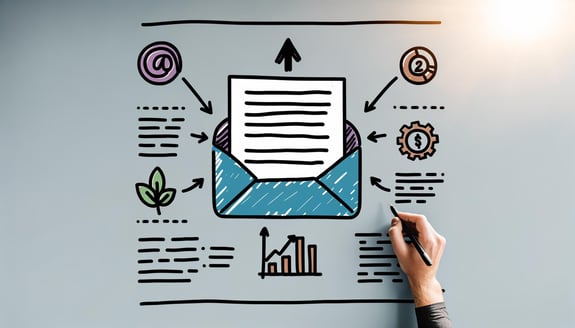Think about all the time you spend crafting great content, writing irresistible CTAs and compelling, engaging copy.
You want people to read your emails, right? And ideally, you want them to take an action off the back of them – whether that’s clicking through to your latest blog post or signing up for a product demo.
So imagine how you’d feel if fewer than one in five people who received your emails bothered to open them, let alone read them. Consider the scenario when you have a large email list size of say over 100K - it would mean that around 80000+ recipients never opened them. Not a happy thought, right?
Fortunately, there’s plenty you can do to push that figure higher – a lot higher.
If your email open rates are low, you can keep in mind these 9 best practices to improve your open rates gradually. These tips work with any industry and any kind of emails you send - drip campaigns, autoresponders, newsletters, sales emails etc.
Table of Contents
- 1. Subject Lines
- 2. Keep Your Email List Fresh
- 3. Optimize the Timing of Your Emails
- 4. Segment Your Email Lists
- 5. Avoid Spam Filters
- 6. Track Email Open Rates and Adapt Based on Results
- 7. Keep an Open Loop at the End of Emails
- 8. Include a Pre-header that Compliments your Subject Line
- 9. Write Relevant Content
1. Subject Lines
When you think about it, it’s a wonder anyone ever clicks on sales emails.
We don’t have much to play with when it comes to persuading people to click – just the sender name, subject line, and maybe a few words of body text.
The greatest piece of content ever written could be hiding inside an email, but if the subject line doesn’t compel the recipient, they’ll never know about it.
Just how important is the subject line? Extremely. In fact, almost half of emails are opened or discarded based solely on their subject line, so you’ll really want to take the time to make them good.
But what does “good” actually look like?
First off, personalization is key. After all, how often do you open letters addressed to “The Resident at ...”? I know I don’t. But recipients are much less likely to ignore an email if they think it’s for them and them alone. In fact, personalizing subject lines can increase open rates by 50%.
In terms of length, brevity is your friend. We suggest that you limit it to 25 characters and three to five words. That might not sound like much, but it’s unsurprising when you consider that half of all emails are opened on mobile devices. At a minimum, you want those users to be able to read the full subject line without having to hold their phone sideways.
Given that you’ve got very limited real estate to work with here, it’s also vital you choose the right type of words. Assertive, active language – words like “account,” “campaign,” and “next” – have been proven to boost open rates, while more passive terms like “invite,” “join” and “confirm” have the opposite effect.
Your Subject lines should have some psychological trigger that makes it work. It should either induce scarcity, FOMO, the self-interest of the reader or just curiosity.
Here are some examples of subject lines from the real-world examples that have at least one trigger and help in getting more open rates
FOMO driven subject lines:
- Uber: “Grab a ride pass before they’re gone”
- Digital Marketer: “[WEEKEND ONLY] Get this NOW before it’s gone…”
- Poshmark: “Your discounts EXPIRE SOON.”
- Shoes of Prey: “In case you missed these…”
Pain-point addressing subject lines:
- Pizza Hut: “Feed your guests without breaking the bank”
- IKEA: “Where do all these toys go?”
- IKEA: “Get more kitchen space with these easy fixes”
- HP: “Stop wasting money on ink”
Re-targeting / Re-engagement subject lines:
- Dollar Shave Club: “Hey, did you forget to open this?”
- The Bouqs Company: “Can You Believe It’s Been a Month?”
- Chubbies Shorts: “Lemme Teleport You Back to Your Cart. Free Of Charge.”
- LinkedIn: “[Name], people are looking at your LinkedIn profile”
Social Proof subject lines:
- Patagonia: “Top reviewed styles from customers like you”
- HelloFresh: “Pssst… your friends are cooking up a storm!”
- GolfNow: “You deserve some golf this week (top picks inside)”
- Yummly: “Most Popular Recipes this Week”
If you want to explore a list of 300+ subject lines we have collected over the past few years, you should check out this post on subject lines here. Bookmark it for future use and it can be a very handy swipe file.
2. Keep Your Email List Fresh
Maintaining a quality email list is like painting the Golden Gate Bridge – it’s never finished.
You might be signing up dozens of people a day, but your list could still be shrinking. That’s because marketing databases naturally degrade by 22.5% a year due to contacts’ email addresses changing as they move jobs, recipients abandoning old email addresses, and subscribers opting out of email communications.
Some accounts will be shut down completely. Others will still be technically active, but never checked.
Either way, these old accounts are hurting your open rates by diluting the quality of your email list.
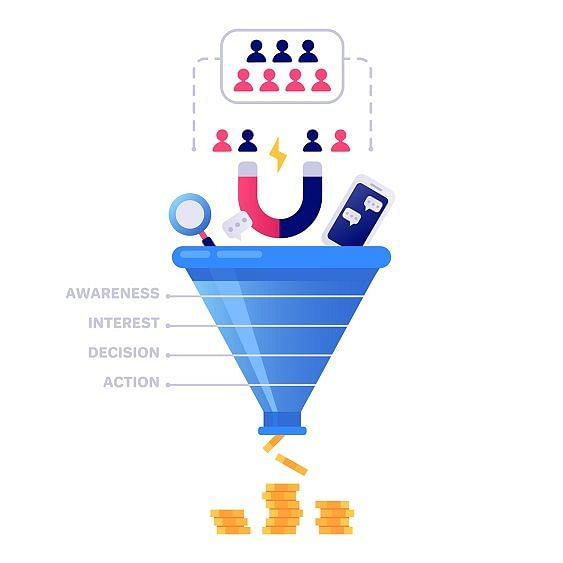
Let’s say you send an email to 1,00,000 accounts. Only half of those accounts turn out to be active. Of those 50000 active accounts, 10000 people open your message, for an open rate of 20% – slight above average. Good job! But when you factor in the 50000 inactive accounts, your open rate slumps to a measly 10%. In other words, you missed out on great results without even realizing it.
You’ve got two options here. Either you can manually trawl through your email list, painstakingly deleting inactive accounts, or you can use an email verification tool to quickly and efficiently weed out bad email addresses.
3. Optimize the Timing of Your Emails
Got a landline? Ever had your dinner interrupted by a telemarketing call? Me too. That’s because B2C cold callers know that potential customers are most likely to be home in the evening.
It’s no different with email marketing. There’s no point sending an email at a time when people aren’t going to read it. Unless they already love your brand, it’s pretty unlikely they’ll bother scrolling back through their inbox to look for it later.
So when should you be sending your emails?
Common sense has to play a part. For example, let’s say you’re targeting lightbulb manufacturers. Every year, the lightbulb community flocks to LightBulbCon, the industry’s must-attend networking event. While they’re at the conference, they’re not allowed to have their phones with them, in case they leak any industry secrets to the press. So there’d be little point in sending any emails for the duration of the event.

Let's take an example of re-targeting emails: If someone puts an item in the cart and leaves without buying it, you send an email to them to relook at their cart. The timing of this email matters because if sent too early, your email might get ignored as the customer might still be exploring around other options. If sent too late, they might drop the idea of purchase or buy from another brand.
So, optimize the timing of your re-targeting email by testing what time works best - whether it is 6hours, 1 day or 2 days.
For example, the brand Yeti sends a retargeting email after 1 day of you leaving the items abandoned in their cart.
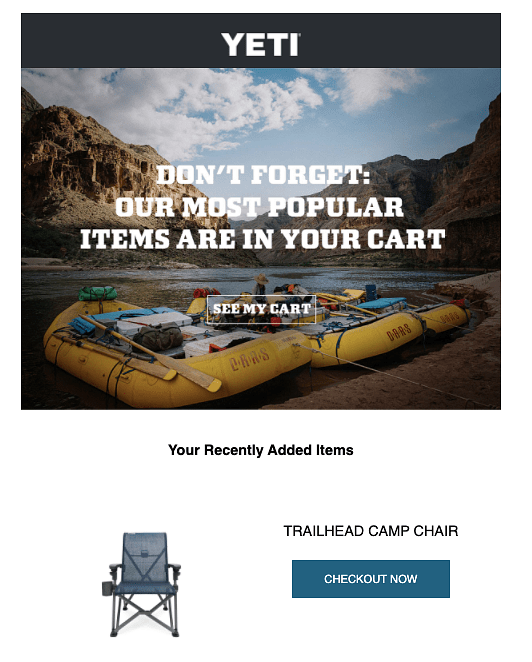
Beyond these types of situations, research suggests some days and times are better than others for generating good open rates.
According to HubSpot, Tuesday is the best day to send sales emails, followed by Monday and Wednesday, while the best time to send an email is between 6am and 10am, or at 2pm, or at 8pm. Sending during these times can increase average open rates and click-through rates by a fair bit.
4. Segment Your Email Lists
Segmenting your email list means creating groups of email addresses of people with some similar characteristic. Segments can be created based on demographic, purchase behavior, email interaction rate etc.
If you send the same message to everyone even if it's not relevant to them, then people will stop opening your emails or mark them as spam and worse, unsubscribe. Segmenting will help you send the right email to the right audience and not bombard everyone with the same message.
For example, you can segment people based on product purchased before vs not purchased. Then the discount code for the product can be sent to non-buyers only.
Another example is your webinar email flow. You can send a reply to people who didn't attend the webinar or dropped off in between. And you should send webinar reminders to people who registered and not everyone. Mindvalley uses this technique to send reminders and reply emails:
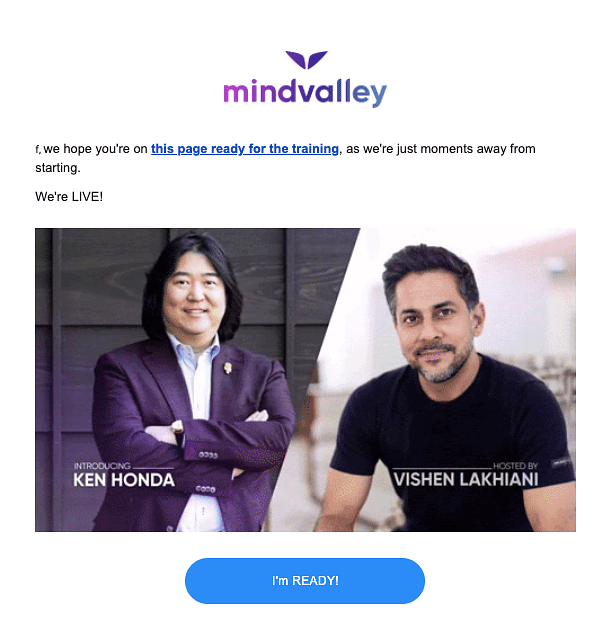
Create a different email for each segmented list. These emails should contain different content topics, as content relevant to a CTO probably won’t be appropriate for a CPO, for instance.
You may also want to adjust your tone of voice from email to email: a marketing manager you know well should be addressed differently than a CEO you’ve never met.
5. Avoid Spam Filters
Globally, some 14.5 billion emails are marked as spam every day, equating to 45% of all emails sent.
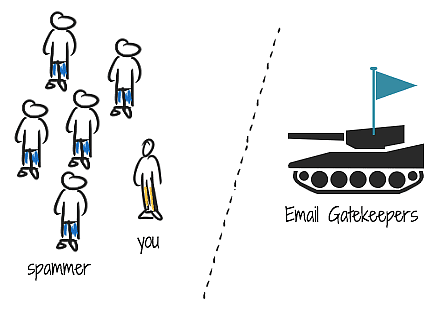
For salespeople, being caught by spam filters is bad news all around – and when your deliverability is negatively affected, open rates dive – not to mention your other KPIs.
It’s becoming harder to stay out of spam filters – especially for salespeople using cold outreach. Yet it’s certainly not impossible.
It’s essential to warm up your email account before sending from it. This technique includes methods such as personalizing and living in the account before using it for campaigns, ramping up campaign emails slowly, and ensuring automated campaigns come across as human.
You can also improve deliverability by using your sending calendar to space out sends and limit how many emails you send per day, in line with Google’s sending limit regulations.
6. Track Email Open Rates and Adapt Based on Results
Open rates are calculated by taking the number of unique opens, dividing that figure by the number of emails sent, and taking away the number of bounced emails.
Many email tools will calculate this figure for you: open rates are a vital KPI when it comes to tracking campaign performance.
Track your overall open rates for each campaign, comparing the results to find out which performed best, and then analyzing why this was the case.
Maybe a shorter subject line increased open rates, or emails you sent on Wednesdays won the most opens. Or perhaps a campaign run with a casual tone of voice garnered significantly more opens than a more corporate effort.
Whatever the case, these are invaluable insights into what engages the recipients on your email list – and it’s essential to ensure your next campaign takes them into account.
You can also improve open rates by using A/B testing. Track open rates as you A/B test different subject lines, and different times and dates to send. When it comes to launching the full campaign, use the subject lines and times and dates that performed best in the testing stage.
Then, sit back and watch your open rates skyrocket.
7. Keep an Open Loop at the End of Emails
If you have ever noticed, your favorite tv shows are designed in a way that at the end of every episode, you have an open loop or cliffhanger. It's something that makes you curious to know what happens next. And that triggers the binge-watching mode.
The same concept can be applied in emails. It shouldn't be done for each email but you can do it for, say 3-4 emails in your newsletter.
You breakdown a concept into 3 parts and explain each part in 3 separate emails. End your emails with an interesting question of a sneak-peak into your life and promise of showing the full picture in your next email.
This keeps people interested to check out the emails in that series.
Here is how Ramit Sethi uses it :

Here are three emails in a three part series:

8. Include a Pre-header that Compliments your Subject Line
A pre-header is text that is visible after the subject line in your inbox email preview section.

The very first thing subscribers read is the subject line.
If that catches their attention, then they will read the rest of the text that appears in preview section. If that builds further anticipation, then they’re going to open the email.
So pre-header acts as a bridge between the subject line and the main content of your email.
Including a pre-header that compliments your subject line will provide a little bit more context into what to expect inside the email and might compel people to finally check it out.
Two main tips for pre-headers:
- Make your pre-header short, about 55-60 characters so that it doesn't get cut off in the preview area.
- Don't repeat the subject line.
9. Write Relevant Content
This is very obvious and might not appear directly relating to the open rates. But your content is the main factor why someone will read your emails.
Here are two main tips to write relevant content:
- Write about what you promised the subscribers when they first signed up to receive your emails. It would be foolish to ask people to signup to receive yoga tips and then send them discounts for ice-creams.
- Think about what's in it for the reader and why someone would care about what you are saying. Self-interest is one main reason why someone will open your email. Emotional relationship with your brand will come later in the journey of the subscribers. Initially, you have to show what value are you adding to the reader's lives
To Sum Up
Following email open rate best practices is crucial for effective email marketing. It ensures higher engagement, better deliverability, and accurate metrics for campaign assessment. By optimizing subject lines, timing, and content relevance, businesses can enhance audience interaction, foster customer relationships, and achieve their marketing goals more efficiently.


